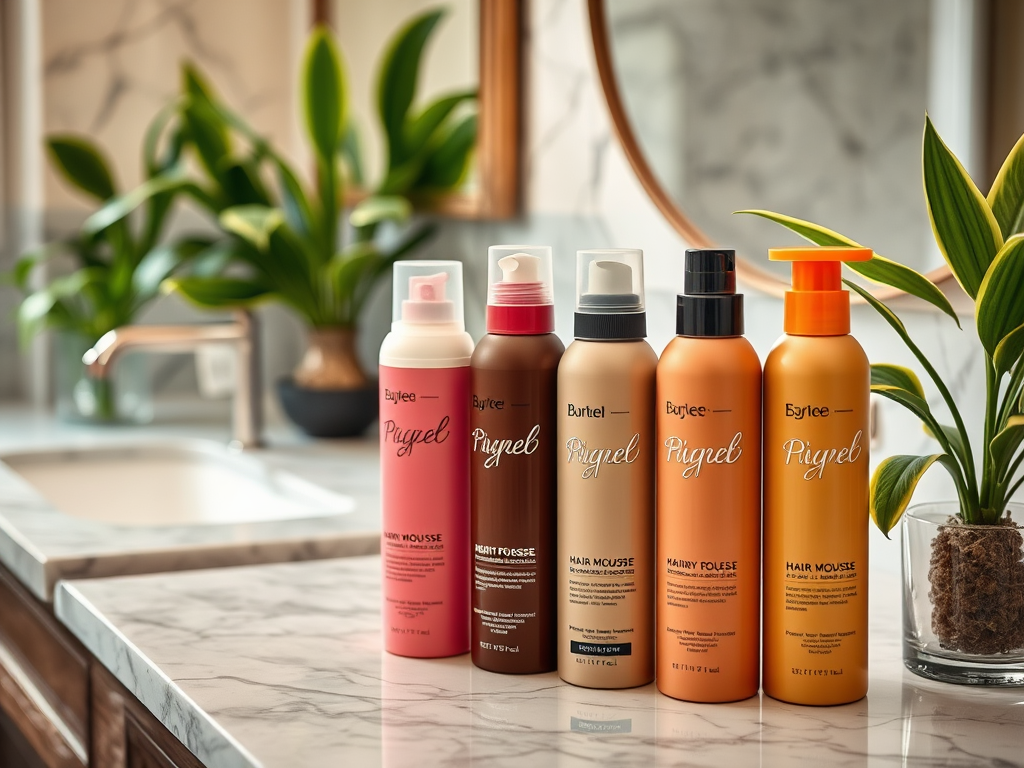Frizz is a common enemy that many individuals face in their daily hair routines. On humid days, unruly locks can leave you feeling frustrated and unkempt. Luckily, hair mousse has entered the chat as a potential solution. This versatile styling product offers not only hold but also the promise of frizz control. So, does mousse really come to the rescue? Let’s delve deep into the benefits, types, and usage of mousse in your quest for smooth, manageable hair.
Understanding the science behind frizz is vital to unraveling how mousse can help. Frizz often arises from the hair cuticles becoming rough or damaged, inviting moisture into the hair shaft. When humidity strikes, this reaction can result in a poofy, uncontrollable hairstyle. There are various factors at play, including heat damage from styling tools and chemical treatments that further exacerbate the situation. Assessing these causes allows us to better appreciate the role that hair care products, like mousse, have in managing our locks.
Understanding Frizz and Its Causes

Frizz can be a common issue for many people, leading to unmanageable hair and a less polished look. To effectively tackle frizz, it’s essential to understand what causes it.
What is Frizz?
Frizz can be defined as the state where hair strands become unruly and fray upwards, breaking the smoothness that one desires. It’s more than just an aesthetic issue; frizz can be a sign of underlying hair health problems. When hair cuticles become rough or damaged, moisture from the air can penetrate the hair shaft, causing it to swell and give that frizzy appearance. Understanding what constitutes frizz is crucial in combating it, and this knowledge enables the selection of effective products and techniques tailored to your hair type.
Common Causes of Frizz
- Humidity: High moisture levels in the air can cause hair to absorb water, leading to frizz.
- Heat Damage: Regular use of heat styling tools can weaken the hair cuticle, making it more susceptible to frizz.
- Chemical Treatments: Hair dyes, relaxers, and perms can alter the hair structure and contribute to frizz.
- Lack of Moisture: Dry hair is more prone to frizz as it seeks moisture from the environment.
What is Hair Mousse?

Hair mousse is a lightweight styling product that comes in foam form. It’s designed to add volume, enhance texture, and help manage frizz effectively. Most mousses are composed of a variety of ingredients aimed at achieving different results. With diverse formulations available on the market, selecting the right mousse can significantly impact your hairstyle. The product not only adds styling flexibility but also can provide crucial benefits that may help solve common hair woes.
Most mousses contain polymers that help provide structure to styles without weighing the hair down. Ingredients like proteins can also be included, as they strengthen and nourish the hair, while moisturizing agents help to combat dryness. These ingredients coalesce to give you a product that not only holds your style but can also fight frizz. Understanding what goes into your mousse can guide you to make better choices for your specific hair needs.
How Mousse Works to Control Frizz
Using mousse can be an effective method to control frizz, but understanding its mechanism is crucial. When applied correctly, mousse can enhance your hairstyle and provide some protection against environmental factors that trigger frizz. In addition to adding hold and volume, mousse can also create a barrier against humidity. This barrier technology is particularly key for those living in humid climates or regions with fluctuating weather conditions.
How Mousse Adds Volume
Mousse can add body to hair, giving it a fuller appearance. This added volume can sometimes help reduce the visibility of frizz, making hair look healthier overall. When your hair appears fuller and bouncier, any flyaways or frizzy ends are often less noticeable. It’s a win-win situation where you achieve both volume and a smoother look with a single product, making it ideal for those who desire versatility in their hair routine.
The Role of Humidity Control
Humidity can wreak havoc on your carefully styled hair. By incorporating mousse designed to resist humidity, you’re taking proactive steps to ensure your hair remains sleek and in control. Some formulations include humidity-blocking ingredients that create a barrier against moisture, helping to maintain smoothness even in humid conditions. This is especially beneficial for those living in hot and humid climates where frizz often reigns supreme.
| Type of Mousse | Best For | Key Ingredients |
|---|---|---|
| Volumizing Mousse | Fine or Flat Hair | Lightweight Formulation |
| Smoothing Mousse | Curly or Frizzy Hair | Hydrating Agent, Silicone |
| Texturizing Mousse | All Hair Types | Salts, Sugar Compounds |
Types of Mousse for Frizz Control
Not all mousses are created equal. Choosing the right type of mousse is essential for effective frizz control. Depending on your hair type and styling goals, the right mousse can offer tailored benefits that directly address your needs. Here’s a deeper look at some popular types that can combat frizz effectively.
Volumizing Mousse
This type is geared primarily towards adding body to flat hair. It typically contains lighter formulations, allowing for movement while offering some frizz control. If you have fine hair, you may find that volumizing mousse gives your hair the lift it needs without adding unnecessary weight. This can be a game changer for those looking to enhance their hairstyle without compromising smoothness.
Smoothing Mousse
Smoothing mousses often include extra hydrating ingredients and silicone to seal the cuticle, providing effective frizz control while still allowing for flexibility in styling. These formulations work to reduce frizz while maintaining hair’s natural texture. If your hair tends to be on the drier side, a smoothing mousse could be the perfect match to enhance shine and smoothness.
How to Use Mousse Effectively
Proper application and technique can maximize mousse benefits for frizz control. While it may seem straightforward, there are specific steps that can lead to a more polished look. Let’s break down the best method to apply mousse to achieve stellar results.
Step-by-Step Application Guide
- Start with damp, towel-dried hair.
- Shake the mousse canister to mix the product.
- Dispense a small amount into your palm.
- Evenly distribute the mousse through your hair, focusing on the mid-lengths and ends.
- Use a wide-tooth comb or your fingers to avoid creating frizz.
- Style as desired, either air-drying or using a diffuser for added volume.
Additional Tips for Best Results
- Avoid using too much product, as this can lead to stiffness.
- Pair mousse with other styling products like leave-in conditioners or oils for enhanced benefits.
- Consider your hair type when selecting a mousse; some formulas work better for specific textures.
Conclusion
Mousse can indeed play a significant role in controlling frizz when used correctly. By understanding the types available and how to apply them, you can achieve smoother, healthier-looking hair that withstands the challenges of humidity and heat. Remember that the proper application, coupled with the right formulation, can make all the difference in your styling routine. Whether you need volume, moisture, or both, mousse stands as a versatile contender in the fight against frizz.
Frequently Asked Questions
- Does mousse make hair crunchy? While some mousses can create a slight crunch, choosing the right smoothing mousse can minimize this effect.
- Can I use mousse on dry hair? It’s best used on damp hair for optimal results, but some lightweight formulas can be applied to dry hair for touch-ups.
- How often should I use mousse? You can use mousse regularly, but be cautious of buildup. Clarifying shampoos can help maintain clean hair.
- Is mousse suitable for all hair types? Yes, there are formulations available for different hair types—fine, thick, curly, or straight.
- Will mousse weigh my hair down? When applied correctly and in moderation, mousse is designed to provide lift without weighing hair down.